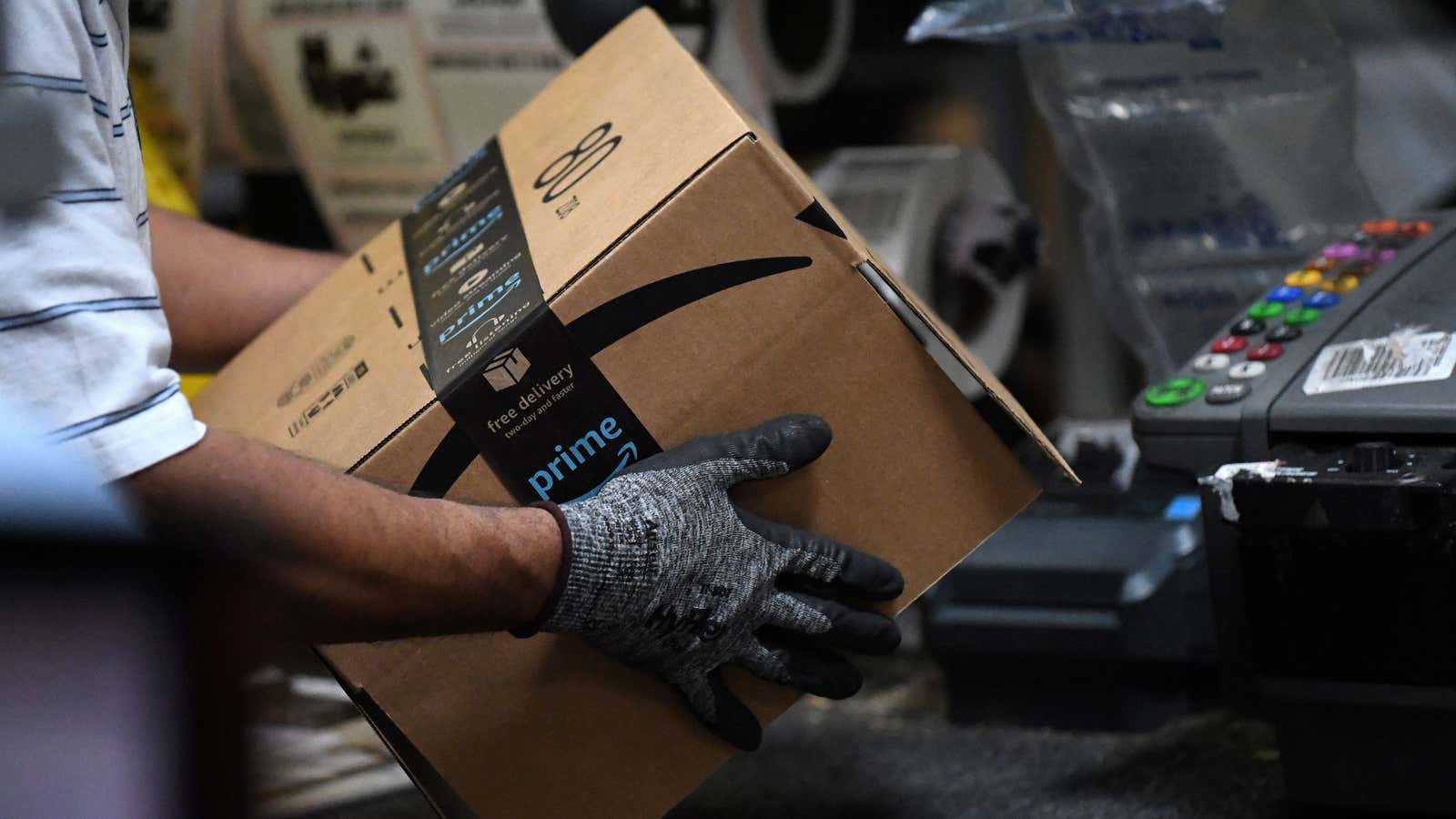It’s been yet another record-breaking holiday season for Amazon, the company says. Having only grown stronger as Covid-19 drives a surge in e-commerce, Amazon delivered more than 1.5 billion items globally, including toys, personal care and beauty products, electronics, and much more. It can’t claim all the credit though. It had plenty of help.
Since 2017, most of Amazon’s sales have come from independent sellers on its third-party marketplace, who are critical in supplying the huge breadth of products Amazon offers. Most are small and medium-sized businesses that use Amazon to reach its millions of customers. This holiday season was their best-ever on its site, Amazon said. Globally their sales grew more than 50% compared to the same period in 2019.
In the midst of a pandemic, when companies of all sizes have struggled, Amazon undoubtedly extended a lifeline to more than a few. But small-business success through the e-commerce giant has long come at a cost, and the party benefitting most in the end is Amazon.
Beating out the competition on Amazon’s marketplace can be costly. Many companies pay extra to be part of Fulfillment by Amazon (FBA), for example, a program in which Amazon stores and ships third-party items itself. They also pay to advertise on Amazon so more shoppers will see their products. Of course Amazon takes its slice of each sale, too. The fees add up.
In a blog post last year, Molson Hart, whose company sold plush and construction toys on Amazon, detailed how the company ultimately captured roughly half of the sale of a $15 toy. Over the course of 2018, Amazon collected nearly $2 million from Hart’s company, on total sales of about $4 million.
Amazon argues these programs are voluntary. No business has to participate, and Amazon has previously told Quartz the majority of sellers have built and run their businesses on its marketplace without advertising.
But sellers can feel like paying up is in fact necessary to be competitive. If a company doesn’t join FBA, its products may not be eligible for Prime shipping, making them less attractive to shoppers who come to Amazon for fast delivery. If it doesn’t pay for advertising, which gives products higher placement among Amazon’s glut of options, customers may not see what it’s selling. Because Amazon is where the customers are, it leaves little alternative. “There’s really no other choice,” one seller told the New Yorker last year.
In the announcement of its holiday results, Amazon touted all it has done to help small and medium-sized businesses since the start of the pandemic. The company has “absorbed more than $5 billion in operational costs” on their behalf, it said, and invested billions to help them grow sales. It also gave startups more than $1 billion in credits for its cloud-computing platform, Amazon Web Services. Many businesses surely appreciated the assistance, and Amazon of course benefits from their sales.
Amazon has always played a long game, sacrificing short-term profits for greater growth and market share. And as sales rise on its marketplace, Amazon’s dominance grows too. It relies on each individual seller a bit less, while they depend on Amazon a bit more, giving it greater leverage over those sellers and everyone else. Small businesses had a good season on Amazon, but Amazon did best of all.
